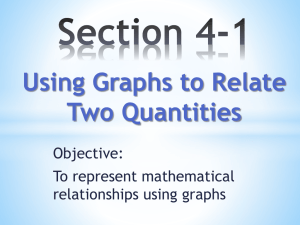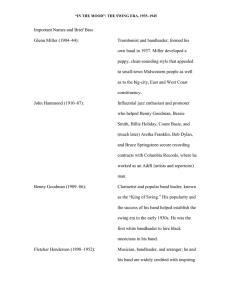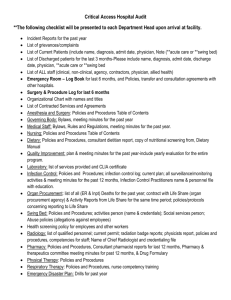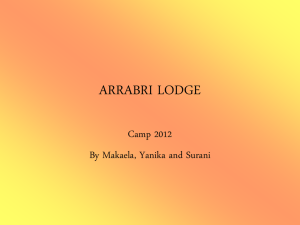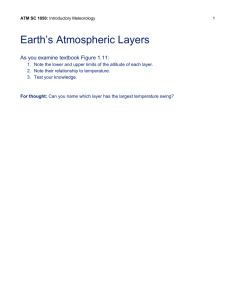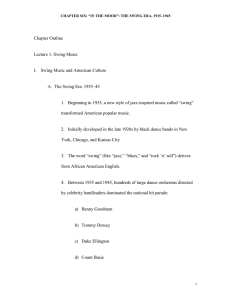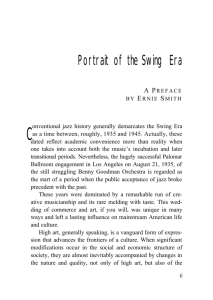Jazz Swing Pure Pleasure Assignment
advertisement
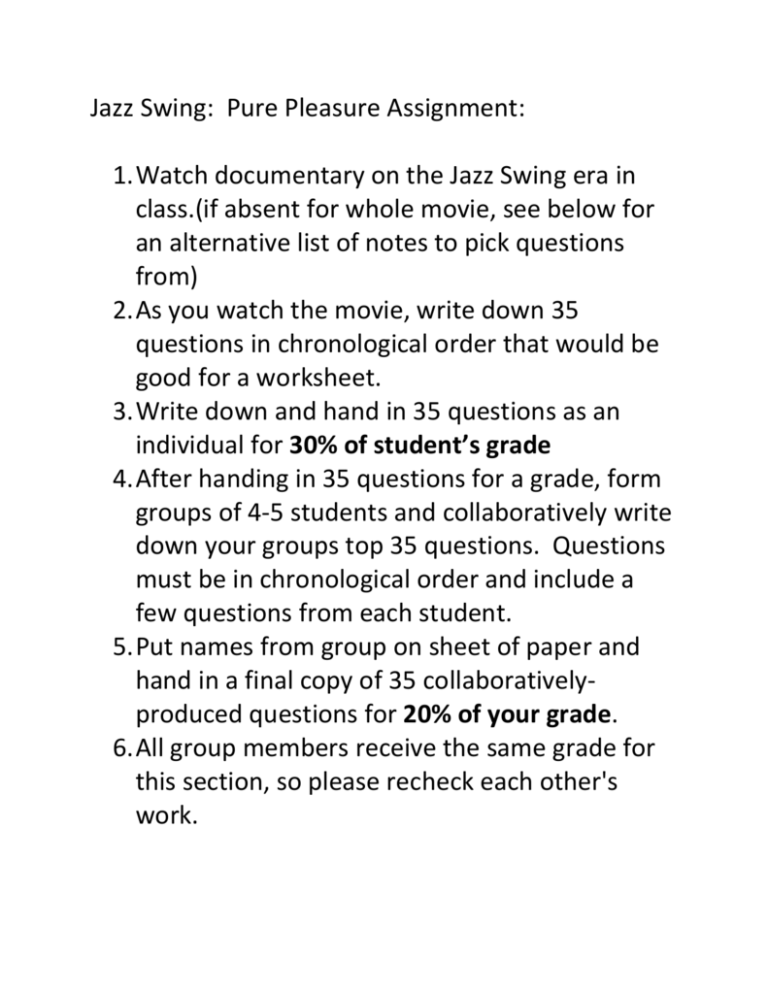
Jazz Swing: Pure Pleasure Assignment: 1. Watch documentary on the Jazz Swing era in class.(if absent for whole movie, see below for an alternative list of notes to pick questions from) 2. As you watch the movie, write down 35 questions in chronological order that would be good for a worksheet. 3. Write down and hand in 35 questions as an individual for 30% of student’s grade 4. After handing in 35 questions for a grade, form groups of 4-5 students and collaboratively write down your groups top 35 questions. Questions must be in chronological order and include a few questions from each student. 5. Put names from group on sheet of paper and hand in a final copy of 35 collaborativelyproduced questions for 20% of your grade. 6. All group members receive the same grade for this section, so please recheck each other's work. 7. Each group must then collaborate and collectively come up with one final draft of 35 questions in chronological order. 8. Each group must communicate with each other to complete a final draft of 35 questions. 9. One final draft of 35 group questions in chronological order will be handed in for 20% of your grade. 10. Students will then write down all 35 questions individually while answering them during review of movie. 11. Hand in all written out questions and answers for final 30% of your grade. ** Students who are absent will use the following notes to complete the questions instead of watching the movie** **Swing Era / Big Band Era Developed 1930 - 1945 The Swing Era is also known as the Big Band Era since the number of instruments in these bands was considerably larger than during the previous Dixieland era. o 17 instrumental musicians or more 5 saxes (2 altos, 2 tenors, 1 bari) 4 trumpets 4 trombones 4 rhythm section (piano, bass, guitar, drums) Swing bands = dance bands (primarily for dancing) “Call and response” common musical device (musical conversation) o This is where one section (say, the brass section, i.e., trumpets and trombones) would play a musical phrase and then be “answered” by another section (say, the saxes); the first phrase is the call, the answer is the response (like a musical conversation). This would go back and forth a number of times. Duke Ellington, Count Basie, Benny Goodman Although the Swing Era was dominated by big bands, there were a few important small groups as well, including the Benny Goodman Trio, Quartet, and Sextet (Benny also had a big band). After the Stock Market Crash of 1929, swing helped the country through the Great Depression, creating escape from economic realities via swing dancing. Swing, and especially Duke Ellington’s music of the early 1930s, was the musical backdrop during the later years of the Harlem Renaissance. Swing served as a major morale booster during World War II. Music example: “Jumpin’ at the Woodside” performed by Count Basie Also, please google Swing Era/Big Band Era for more questions if needed

